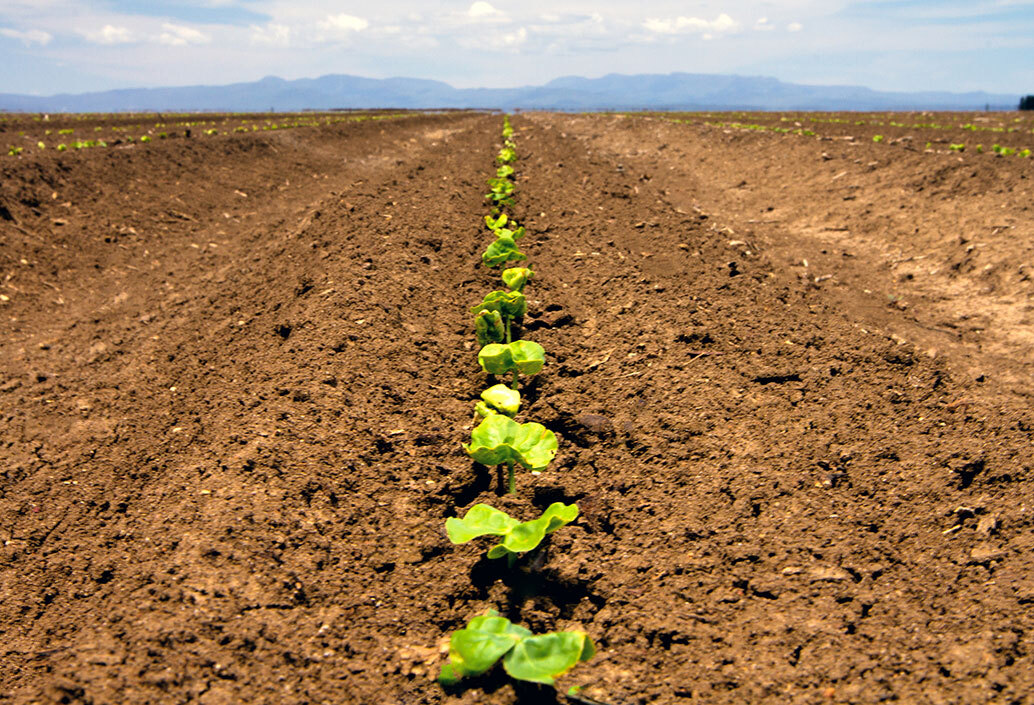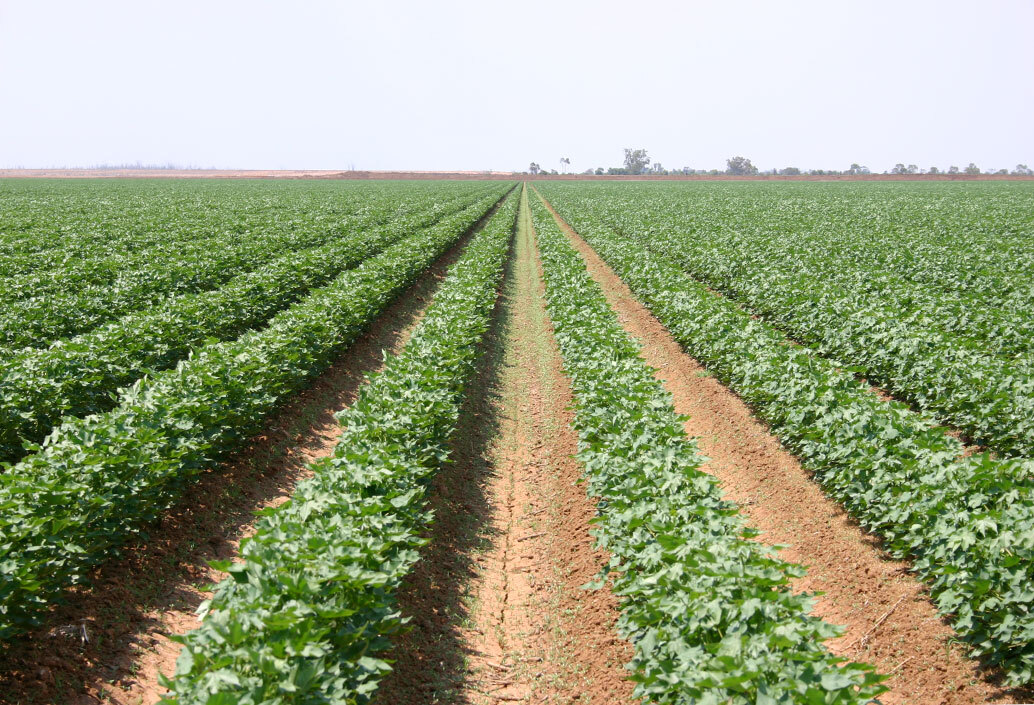The cotton plant
- Cotton is a natural fibre grown on a plant.
- Cotton is grown over warm summer months.
- Almost all parts of the cotton plant are used in some way.
Cotton is a natural fibre that grows on a plant. It is both a food and fibre crop, and the plant is a leafy, green shrub related to the hibiscus species of plants.
There are up to 52 species of cotton in the Gossypium genus (source: The Biology of Gossypium hirsutum L. and Gossypium barbadense L. (cotton), 2008). The most commercially grown cotton species is Gossypium hirsutum, first developed by the Mayan civilisation in Mexico.
Cotton is grown between 45 degrees north and 35 degrees south of the equator (source: ICAC, 2012), and is the most widely produced natural fibre in the world, representing about 31% of the world textile market (source: Australian Grown Cotton Sustainability Report, 2014).
Cotton plant characteristics
Cotton is grown commercially as an annual shrub and reaches about 1.2 metres in height. Its leaves are broad and heart-shaped with coarse veins and three to five lobes. The plant has many branches, with one main central stem. The cotton plant’s taproot reaches a depth of 1.5 metres.
Squares (flower buds) develop several weeks after the plant starts to grow, with flowers appearing a few weeks later. The flowers then drop, leaving a ripening seed pod that becomes the cotton boll (the fruit) after pollination.
The plant also produces seeds that are contained in small capsules surrounded by fibre in the cotton bolls.
Each cotton boll usually contains 27-45 seeds, and attached to each seed is between 10,000 – 20,000 tiny fibres about 28mm in length.
Cotton fibre is made from cellulose, has a slim coating of wax and is thin and hollow like a straw.
When mature, the crop is picked and ginned, a process that separates the cotton fibre (or lint) from the seed.
Cotton lint makes up about 42% of the picked cotton by weight, and contributes about 85% of the total income from a cotton crop. The other 15% of income comes from cotton seed.

Factors impacting plant growth
Australia’s cotton growing season lasts approximately six months, depending on the region. The season starts between August-November (soil preparation and planting) and ends between March-June (picking).
The rate of cotton plant growth is largely determined by temperature. Cool temperatures (<15C average daily temperature) and excessively hot temperatures (>36C) can delay crop development.
About 30 species of insects can attack cotton plants, and if not controlled, can cause serious damage. The main pests in Australia are the Helicoverpa caterpillar, aphids, thrips, mirids, white fly and mealy bugs.
Cotton can be affected by a range of diseases that can reduce productivity. The six most potential serious diseases (that are not in Australia) are bacterial blight, Texas root rot, cotton leaf curl disease, blue disease and exotic strains of Fusarium wilt and Verticillium wilt (source: Innovative Disease Management, Karen A. Kirkby, 2012). Current diseases causing concern are black root rot, Fusarium wilt and Verticillium wilt, and Alternaria.
Environmental factors can also affect cotton growth, particularly in the early stages, including heat shock, cold shock, sand blasting, hail damage, lightning, drought, and water logging.

The benefits of cotton
Almost all parts of the cotton plant are used in some way, including the lint, cottonseed, linters, stalks and seed hulls.
Cotton fibre is processed into yarn and fabric, the seeds can be crushed for oil or animal feed, the linters (small fibres left on the seed following the ginning process) are used to make products like cotton balls, and the remaining plant material is either mulched or even composted and reapplied to the soil. Cotton seed plays a very important role during times of drought as a livestock feed.
Cotton is a soft, absorbent and breathable natural fibre, making it a perfect material for clothing and undergarments worn close to the skin.
Cotton keeps the body cool in summer and warm in winter because of its good heat conducting properties. Cotton is non-allergenic and, unlike synthetic fibres, is a natural product that contains no chemicals.
Due to its natural whiteness and high rate of absorbency, cotton is one of the best fabrics to dye. Australian cotton is perfectly suited to colour application processes as it offers spinners crisp, white lint, low breakages and stoppages, good throughput efficiency and uniformity of yarn.
